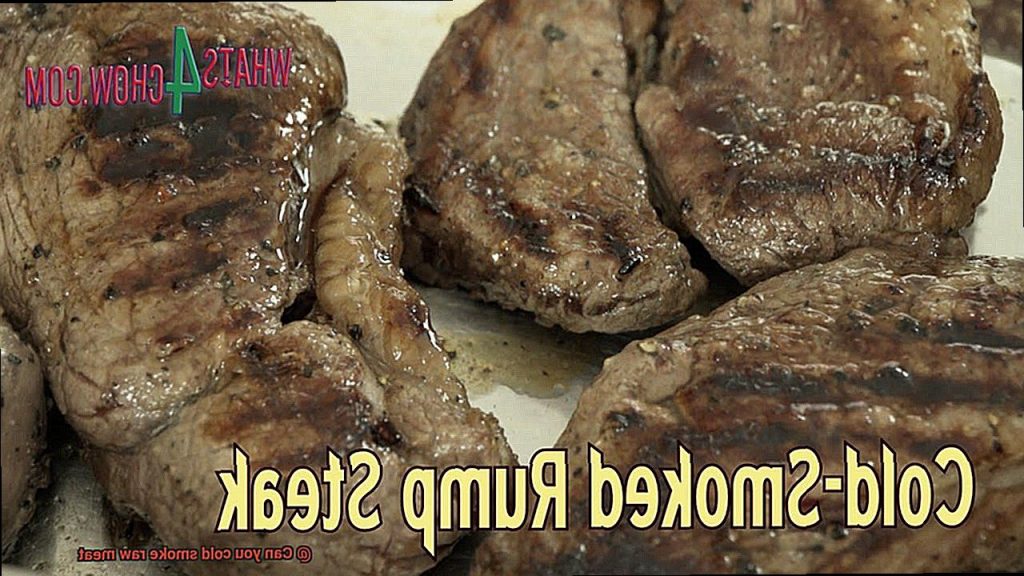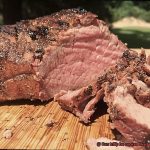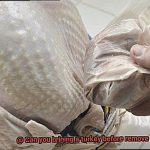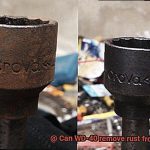As a meat enthusiast, you’re always on the hunt for new and exciting ways to add some smoky goodness to your dishes. And if you haven’t tried cold smoking yet, then you’re in for a treat. But before you dive in headfirst, let’s answer the question that’s been on your mind: can you cold smoke raw meat?
The answer is yes, but it comes with some important caveats. Cold smoking is a method of flavoring food without cooking it by exposing it to smoke at low temperatures for an extended period of time (usually between 68 to 86 degrees Fahrenheit). However, when it comes to raw meat, there’s a risk of harmful bacteria growth such as E. coli and salmonella.

But don’t worry – with proper preparation and safety measures, you can safely cold smoke raw meat. The key is to make sure the meat is properly cured with the right amount of salt and nitrite. Temperature control is also crucial – make sure it stays within a safe range for the meat.
With these precautions in mind, you can enjoy the delicious smoky flavor that cold smoking brings to your favorite meats. So why not give it a try? With the right tools and techniques, you’ll be able to elevate your dishes to new heights of flavor.
Contents
What is Cold Smoking?
If you’re a fan of the rich, smoky taste of meats and cheeses, you may have heard of cold smoking. This ancient preservation technique has been used for centuries to impart flavor and prolong the life of food items. But what exactly is cold smoking, and how can you use it safely with raw meat?
Cold smoking involves exposing food to smoke at low temperatures, typically between 68 and 86 degrees Fahrenheit, for several hours or even days. Unlike hot smoking, which cooks the food as it smokes, cold smoking doesn’t cook the food but instead imparts a smoky flavor and helps preserve it by removing moisture.
One of the keys to successful cold smoking is choosing the right type of wood for your smoking process. Different woods will impart varying flavors to your food. For example, fruitwoods like apple and cherry will give a sweeter flavor, while hickory and mesquite will give a stronger, more savory flavor.
While cold smoking can add delicious flavor to a variety of foods, it’s important to note that it doesn’t necessarily make them safe to eat raw. To ensure that raw meat is safe to consume after cold smoking, specific guidelines must be followed. Firstly, the meat should be of high quality and as fresh as possible. Secondly, a curing agent such as salt or nitrates should be used to reduce the risk of bacterial growth. The curing agent helps draw out moisture from the meat, making it less hospitable for bacteria to thrive.
When it comes to the actual smoking process, temperature and humidity levels must be controlled carefully. The temperature should be kept below 40°F (4°C) to prevent bacterial growth. The humidity level should also be kept in check since high humidity levels can create a breeding ground for bacteria.
Experimenting with different types of wood can be part of the fun of cold smoking. It’s worth noting that cold smoking is often used for meats like bacon, ham, and salmon, as well as cheeses and even vegetables.
Is Cold Smoking Raw Meat Safe?
The main concern with cold smoking raw meat is the potential for bacterial growth. The process of cold smoking exposes the meat to smoke and low temperatures for an extended period, which can create a breeding ground for harmful bacteria such as Salmonella, E. coli, and Listeria.
To ensure that your cold-smoked raw meat is safe, there are some key factors to consider:
- Quality meat is crucial: Start with fresh, high-quality meat from a reputable source. The quality of the meat you use will affect both the flavor and safety of the finished product.
- Proper storage is key: Keep the meat at or below 40°F before and after smoking to prevent bacterial growth. This means using a refrigerator or other temperature-controlled environment.
- Temperature check: Use a reliable meat thermometer to ensure that the internal temperature of the meat reaches 145°F or higher after smoking. This will kill off any harmful bacteria that may have developed during the smoking process.
- Consider using curing agents: Nitrites or nitrates can be used to inhibit bacterial growth during the smoking process. These curing agents are commonly used in commercial meat production but can also be purchased for home use.
By following these guidelines, you can enjoy the delicious taste of cold-smoked raw meat without compromising your health. Keep in mind that food safety is critical no matter what cooking method you use. Exercise caution and follow these tips to ensure a safe and delectable finished product.
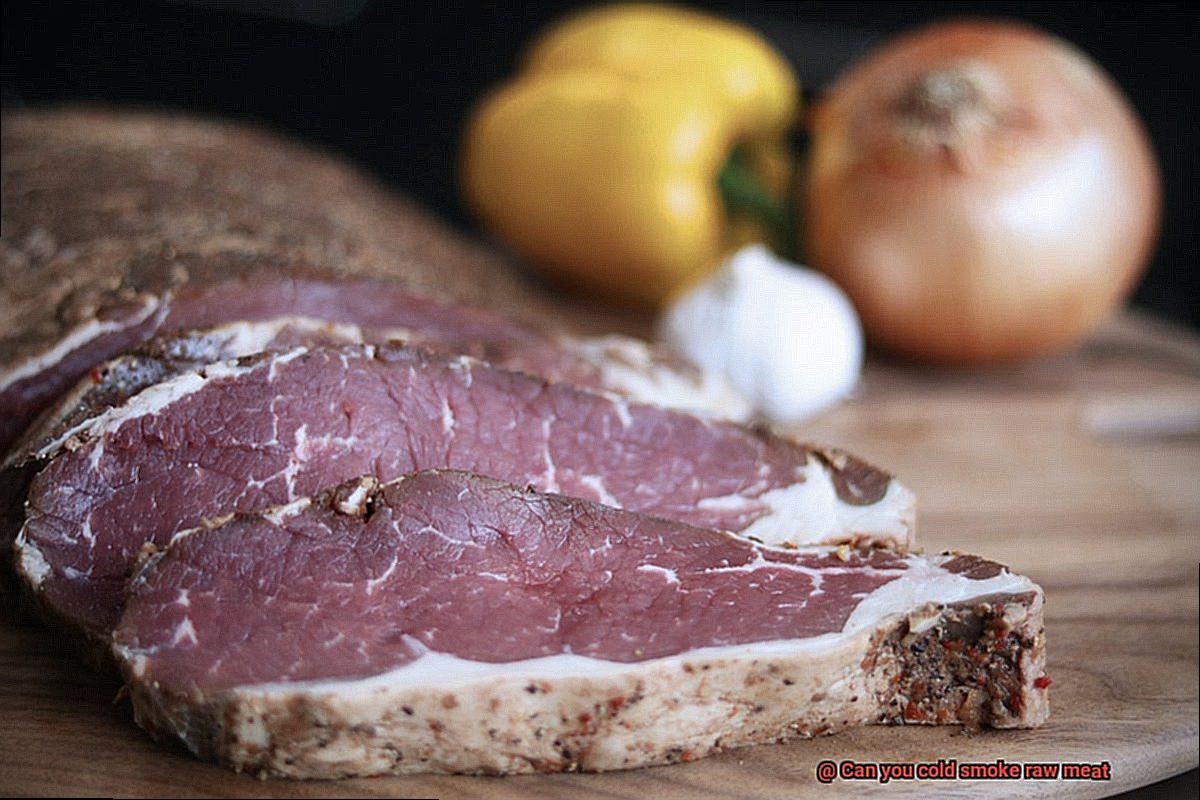
Guidelines for Cold Smoking Raw Meat
Cold smoking raw meat is a popular method for preserving and adding flavor to meats, but it’s crucial to follow specific guidelines and safety measures to ensure that your meat is safe to consume.
Firstly, let’s talk about the importance of using high-quality, fresh meat. Avoid using meat that has been previously frozen or has been sitting in the fridge for an extended period. Properly clean and trim the meat before smoking it to prevent any unwanted bacteria growth.
If you want to add some extra flavor and preserve the meat during the smoking process, consider using a curing mixture or brine. A proper curing mixture should include a combination of salt, sugar, and other seasonings. Soak the meat in the brine for several hours or overnight before smoking.
Now, let’s dive into the actual smoking process. To prevent bacterial growth, it’s crucial to keep the temperature between 68-86°F (20-30°C). Depending on your desired flavor and texture, smoke the meat for several hours or even overnight.
Once you’re finished smoking the meat, it’s important to store it properly to avoid any bacterial growth. Refrigerate or freeze it immediately after smoking. If refrigerated, consume within a few days. If frozen, consume within a few months.
In summary, here are six key guidelines to follow when cold smoking raw meat:
- Use high-quality, fresh meat
- Clean and trim the meat properly
- Consider using a curing mixture or brine
- Keep the temperature between 68-86°F (20-30°C)
- Smoke the meat for several hours or overnight
- Store cold-smoked meat properly
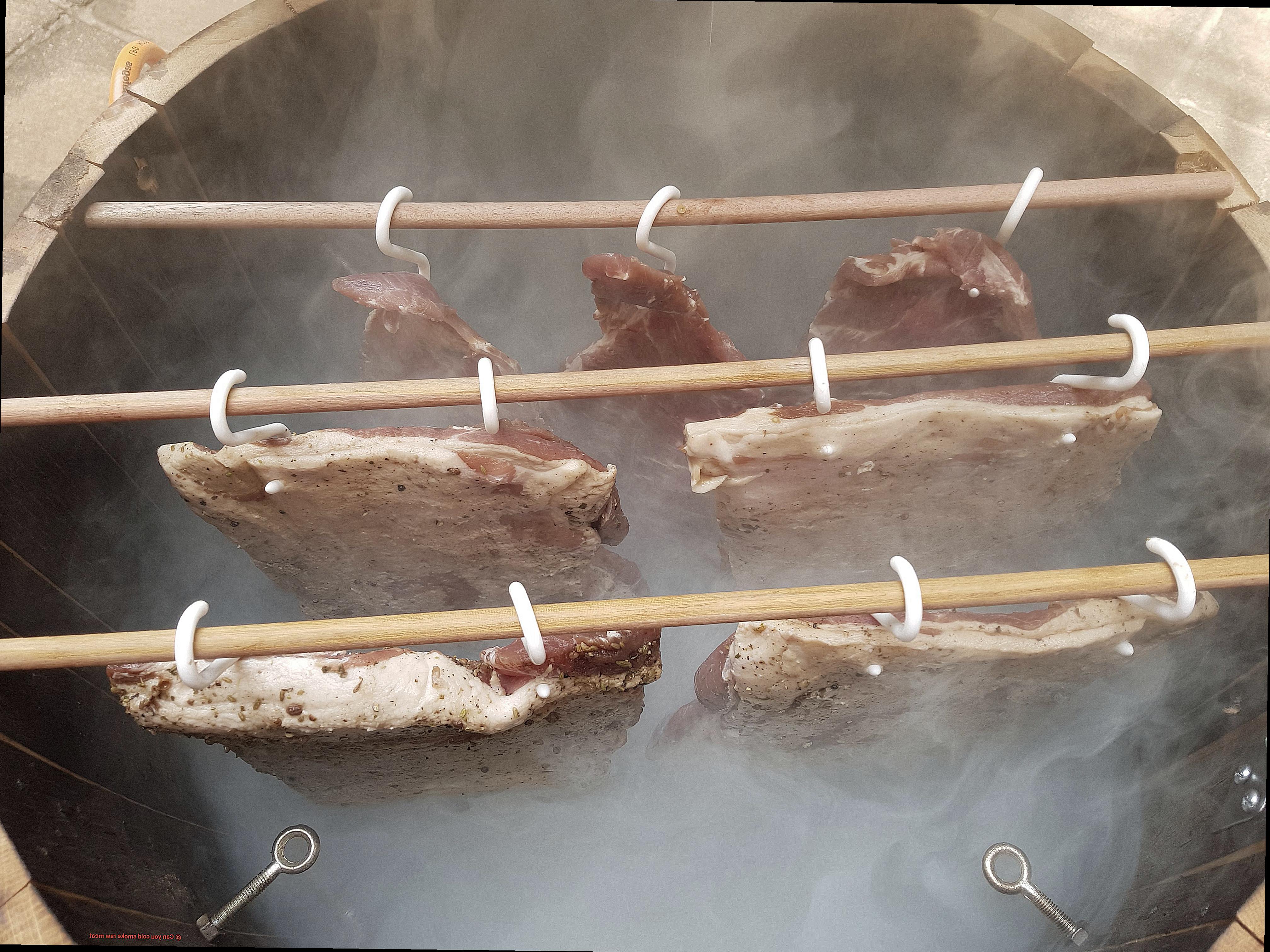
Quality of the Meat
As a connoisseur of smoked meat, I can attest that achieving the perfect flavor and texture is no easy feat. One factor that cannot be overlooked is the quality of the raw meat. Cold smoking, a technique that exposes meat to smoke and low temperatures for several hours or days, requires using only the best possible meat.
The first step in ensuring top-notch meat is to prioritize its freshness and proper handling. Warm temperatures can cause bacterial growth, leading to food poisoning and other health risks. Therefore, it’s crucial to use fresh meat that has been refrigerated at the correct temperature.
Different types of meat also require varying preparation methods before cold smoking. Fatty meats such as bacon or salmon must be cured with salt and sugar to prevent bacterial growth. Meanwhile, lean meats like chicken or beef may benefit from a dry rub or marinade to enrich their flavor.
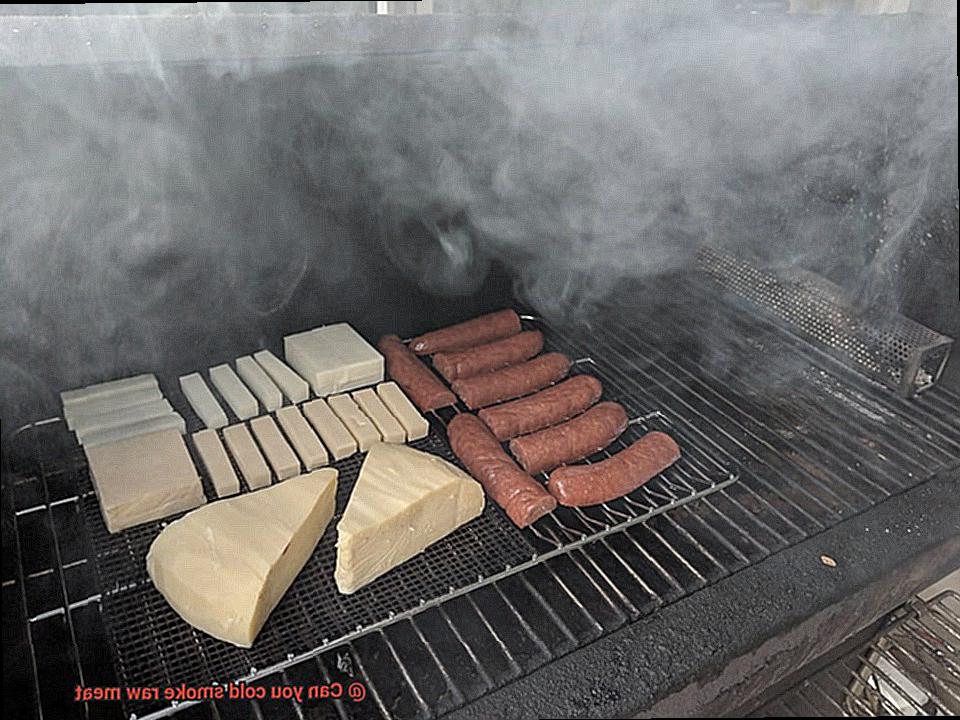
In addition to choosing the right meat and preparation methods, careful smoke management is equally important. Only approved wood for smoking should be used as some types of wood can produce toxic fumes when burned. Over-smoking can also lead to an off-putting bitter taste and tough texture.
Use of a Curing Agent
One crucial aspect of this process is the use of a curing agent.
A curing agent typically consists of salt and nitrites or nitrates. It serves to preserve the raw meat and prevent the growth of harmful bacteria. But what are the benefits and potential risks of using a curing agent? Let’s take a deeper dive.
Benefits:
- Extended Shelf Life: One of the most significant advantages of using a curing agent is that it can extend the shelf life of your cold-smoked meats without requiring refrigeration. This makes it an ideal method for preserving meats for extended periods in areas where refrigeration may not be readily available.
- Enhanced Flavor and Color: Curing agents can also enhance both the flavor and color of the final product. The salt enhances the natural flavors of the meat, while nitrites or nitrates give it that distinct pink color often associated with cured meats.
Risks:
- Improper Use: It is vital to use curing agents properly and in correct amounts. Too much salt or nitrites can be harmful to your health, while too little may not provide adequate preservation. Therefore, it’s recommended to follow a trusted recipe or seek professional advice before attempting to cure your own meat.
- Health Concerns: Some studies have linked high consumption of cured meats to an increased risk of certain cancers, such as colorectal cancer. However, it’s worth noting that these studies are not conclusive, and more research is needed to fully understand the possible health risks.
Temperature and Humidity Control
Controlling temperature and humidity levels is critical to ensure the meat is safe to eat and packed with flavor.
Firstly, before cold smoking raw meat, it’s essential to cure or brine it properly. This not only enhances the flavor but also prevents harmful bacteria from contaminating the meat. Once cured, a smoker or smokehouse is used to maintain a consistent temperature between 68-86°F (20-30°C) over an extended period of time.
It’s worth noting that some smokers have built-in temperature controls, making it easier to maintain the desired temperature. However, even with these features, it’s essential to check the temperature regularly using a thermometer.
Humidity control is crucial during cold smoking as well. The ideal humidity level for cold smoking is between 50-70%. This helps prevent the meat from drying out and becoming tough. To regulate humidity levels, a water pan can be placed in the smoker or smokehouse. Adding water to the pan will increase humidity levels while removing water will decrease them.
Lastly, monitoring the smoke is essential during cold smoking. Too much smoke can make the meat bitter, while too little smoke won’t infuse enough flavor. Aim for a thin, blue smoke that gently wafts through the smoker or smokehouse.
Benefits of Cold Smoking Raw Meat
If you’re looking to spice up your cooking routine, consider the benefits of cold smoking raw meat. This centuries-old method of food preservation involves keeping the temperature below 90°F (32°C) and using smoke generated from burning wood chips or sawdust to impart a unique, smoky flavor to your meats.
One of the most significant advantages of cold smoking raw meat is its ability to extend its shelf life. By inhibiting the growth of bacteria and other microorganisms, meats like bacon, ham, and sausages can be stored without refrigeration for weeks or even months. This makes it an ideal choice for those looking to stock up on protein without worrying about spoilage.
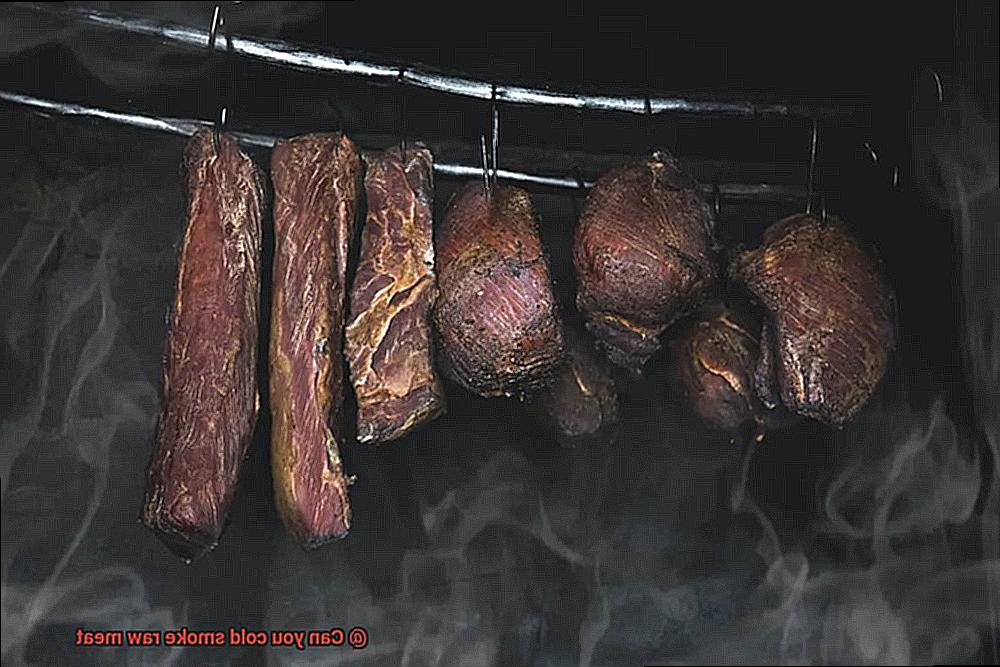
But the benefits don’t stop there. Cold smoking also allows for greater control over the flavor profile of your meats. The type of wood used in the smoking process can greatly affect the taste of the final product, meaning you can experiment with different woods and spice blends to create unique flavor combinations. Whether you prefer the bold taste of hickory or the sweeter notes of applewood, the possibilities are endless.
In addition to its flavor benefits, cold smoking raw meat can also be a healthier alternative to traditional cooking methods like frying or grilling. Since the meat is not cooked during the smoking process, it retains more of its natural nutrients and vitamins. Additionally, because no oils or fats are added during cooking, cold smoked meats are generally lower in calories and fat than their cooked counterparts.
Disadvantages of Cold Smoking Raw Meat
If so, you might have considered cold smoking raw meat. However, before you dive into this tempting option, it’s crucial to understand the potential disadvantages.
One of the biggest drawbacks of cold smoking raw meat is the risk of bacterial growth. Since the meat is not cooked at high enough temperatures, harmful bacteria may still be present on the surface. This can be a significant health risk, particularly for individuals with weakened immune systems. It’s essential to ensure that the meat has been properly cleaned, cured, and stored before cold smoking.
Furthermore, cold smoking raw meat can cause a loss of moisture and flavor. The prolonged exposure to smoke can make the meat dry and tough, resulting in an unappetizing texture. Additionally, since cold smoking does not cook the meat, it may not develop the desired flavor profile that is typically associated with smoked meats. This could leave you disappointed with the final product.
Finally, there is also a potential risk of contamination from the smoke itself. Smoke contains harmful chemicals and carcinogens that can be absorbed by the meat during the smoking process. This can be especially concerning for individuals who are sensitive to these compounds or have pre-existing health conditions. It’s important to use high-quality wood chips or pellets and avoid using treated or painted wood.
rzf67fzOA9Y” >
Conclusion
To sum it up, cold smoking raw meat can be a game-changer for your culinary creations. But, as with any cooking method, safety should always come first. The use of fresh, high-quality meats, proper curing agents, precise temperature and humidity control, and monitoring smoke levels are all crucial elements of the cold smoking process.
Although there are potential risks involved in cold smoking raw meat such as bacterial growth and loss of moisture and flavor, the advantages outweigh them. Cold smoking can prolong the shelf life of meats without refrigeration, offer greater control over the flavor profile of your meats, and provide a healthier alternative to traditional cooking methods.
In conclusion, with adequate preparation and safety measures in place, cold smoking raw meat can take your dishes to the next level of taste bud heaven. So why not experiment with different types of wood and seasonings to create unique flavor combinations that will leave your guests craving more?

